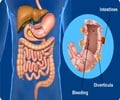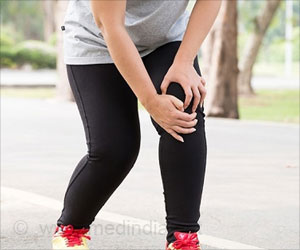Frailty is frequently misunderstood as a wasting illness. New research has emphasized the necessity of staying fit throughout adulthood to reduce the risk of frailty.
- Frailty is frequently misunderstood as a merely wasting condition
- However, obese older persons may be more vulnerable to frailty because obesity exacerbates age-related declines in muscle strength, aerobic capacity, and physical function
- It emphasizes the importance of staying fit throughout adulthood to reduce the risk of frailty
What is Frailty
Frailty is defined by three or more of the following five criteria: unplanned weight loss, tiredness, weak grip strength, sluggish walking speed, and low physical activity levels. It is linked to a higher risk of falling, incapacity, hospitalization, lower quality of life, and mortality.Obese older persons may be at greater risk, according to mounting data, since obesity exacerbates the age-related loss in muscle strength, aerobic capacity, and physical function. However, few studies have followed weight changes and frailty risk over time.
The researchers thus drew on participants in the population-based Troms Study to see if general (BMI) and abdominal (waist circumference) obesity, both independently and together, would increase the risk of pre-frailty/frailty.
The Troms Study consists of seven survey waves of 45,000 Troms, Norway residents aged 25 to 99, conducted between 1974 and 2015-16. The current analysis used data from waves 4 (1994-5) to 7 (2001). (2015-16).
The final study included 4509 participants aged 45 and up. The average baseline age was 51, and the average monitoring period lasted 21 years.
A BMI of less than 18.5 was considered underweight, 18.5-24.9 was considered normal, 25-29.9 was considered overweight, and 30 and beyond was considered obese.
Normal waist circumference (94 cm or less for men and 80 cm or less for women), moderately high (95-102 cm for men and 81-88 cm for women), and high (above 102 cm for men and above 88 cm for women).
By 2015-16, 28% of individuals were considered pre-frail, 1% were considered frail, and 70.5% were considered strong. Women made up roughly 51% of strong individuals and 55% of those who were pre-frail.
While both the strong and pre-frail/frail groups gained weight and enlarged their waistlines during the monitoring period, the strong group had a higher proportion of participants with normal BMIs and waistlines at the start of the monitoring period.
Except for co-existing conditions such as diabetes, potentially influential factors such as alcohol intake and smoking, educational attainment, marital status, social support, and physical activity levels differed significantly between the strong and pre-frail/frail groups and were taken into account in the analysis.
Link Between Body Weight and Fraility
Obese people were about 2.5 times more likely to be pre-frail/frail by the conclusion of the monitoring period than those with a normal BMI in 1994.Similarly, those with a moderately high or high waist circumference were 57% and twice as likely to be pre-frail/frail, respectively, as those with a normal waistline.
Those who began with a normal BMI but a moderately high waist circumference, or those who were overweight but had a normal waistline, were not significantly more likely to be pre-frail/frail at the end of the study. Those who were both obese and had a relatively high waist circumference at the start of the monitoring period, on the other hand, were.
Those who gained weight and whose waistlines enlarged had a higher risk of pre-frailty/frailty than those whose weight and waistlines stayed constant throughout.
While the findings are consistent with prior long-term studies, this is an observational study that did not account for potentially influential changes in lifestyle, nutrition, and relationship networks that may have happened over the monitoring period.
When the over-60s were omitted from the analysis, the findings remained significant for persons with baseline obesity and larger waist circumference. The study comprised only a few underweight people.
However, the researchers propose several probable biological reasons for these findings.
Excessive Fat Cells Increase the Risk of Frailty
These include fat cells' increased inflammatory capacity and infiltration into muscle cells, both of which are likely to amplify naturally occurring age-related declines in muscle mass and strength, increasing the risk of frailty, they say.Nonetheless, they add, "In an environment where the population is rapidly aging and the obesity epidemic is on the rise, emerging data recognizes the subgroup of 'fat and weak' older persons rather than considering frailty solely as a wasting condition." "Their findings emphasize the necessity of consistently evaluating and maintaining appropriate BMI and [waist circumference] throughout adulthood to reduce the risk of frailty in later life," they write.
Source-Medindia
















